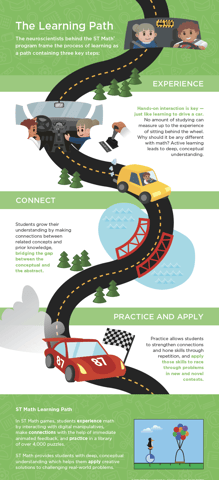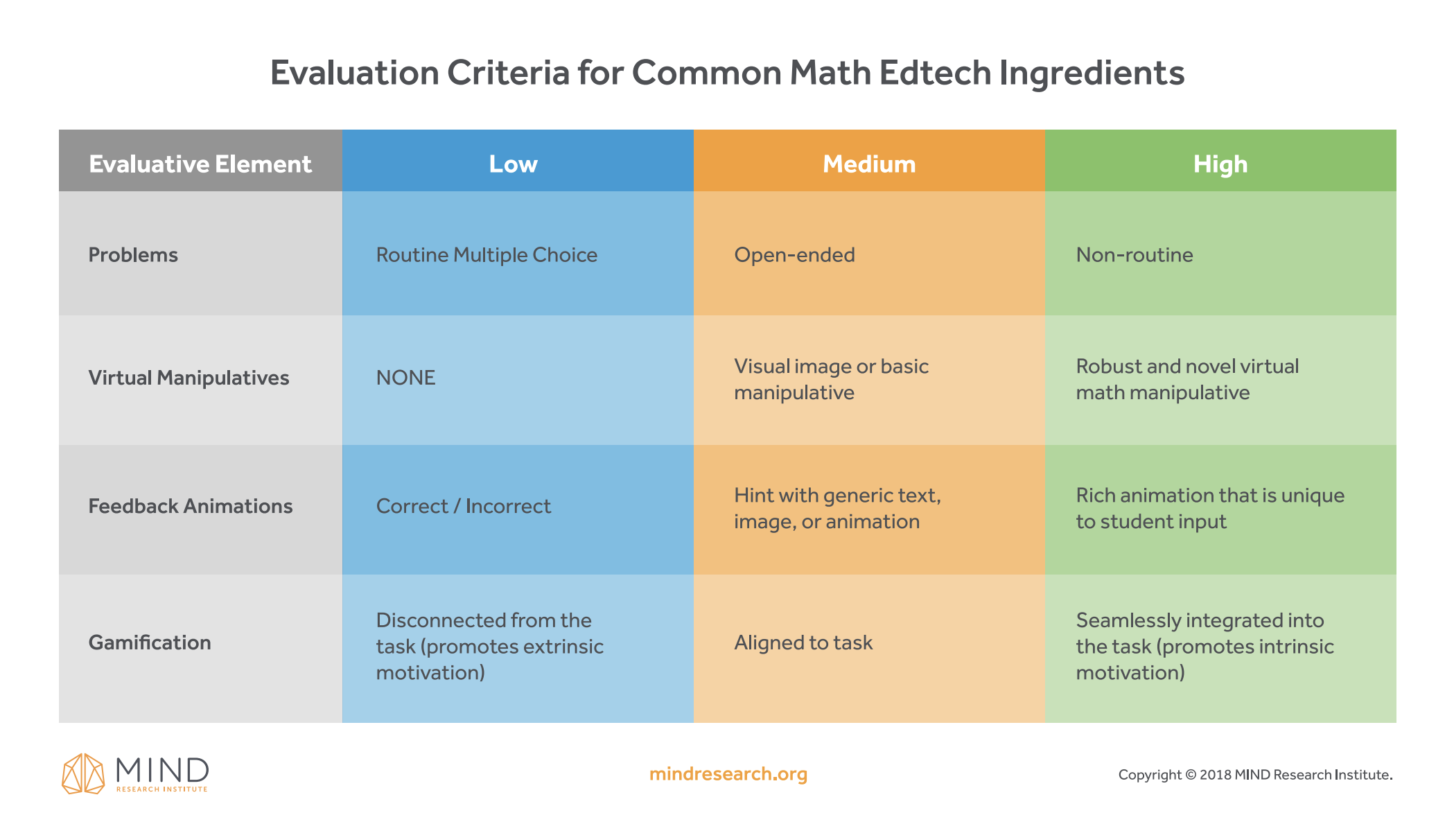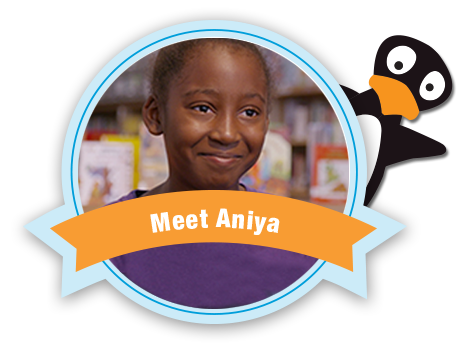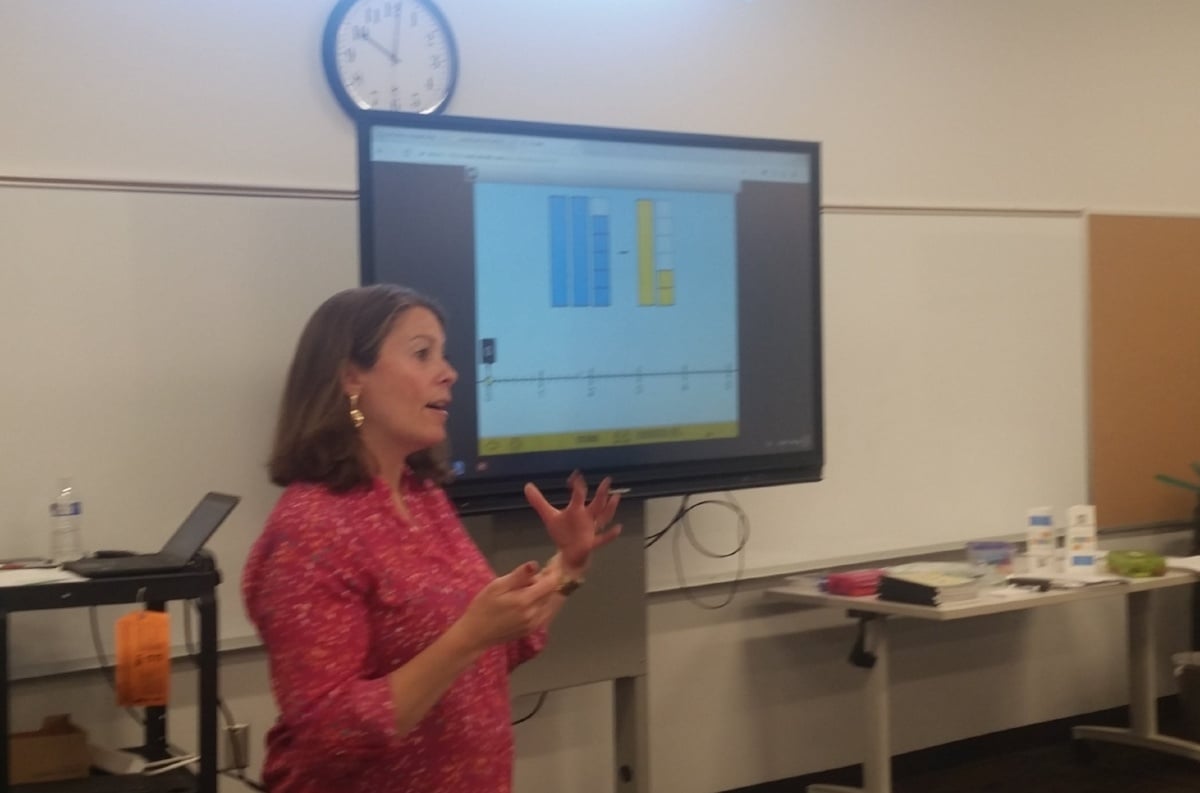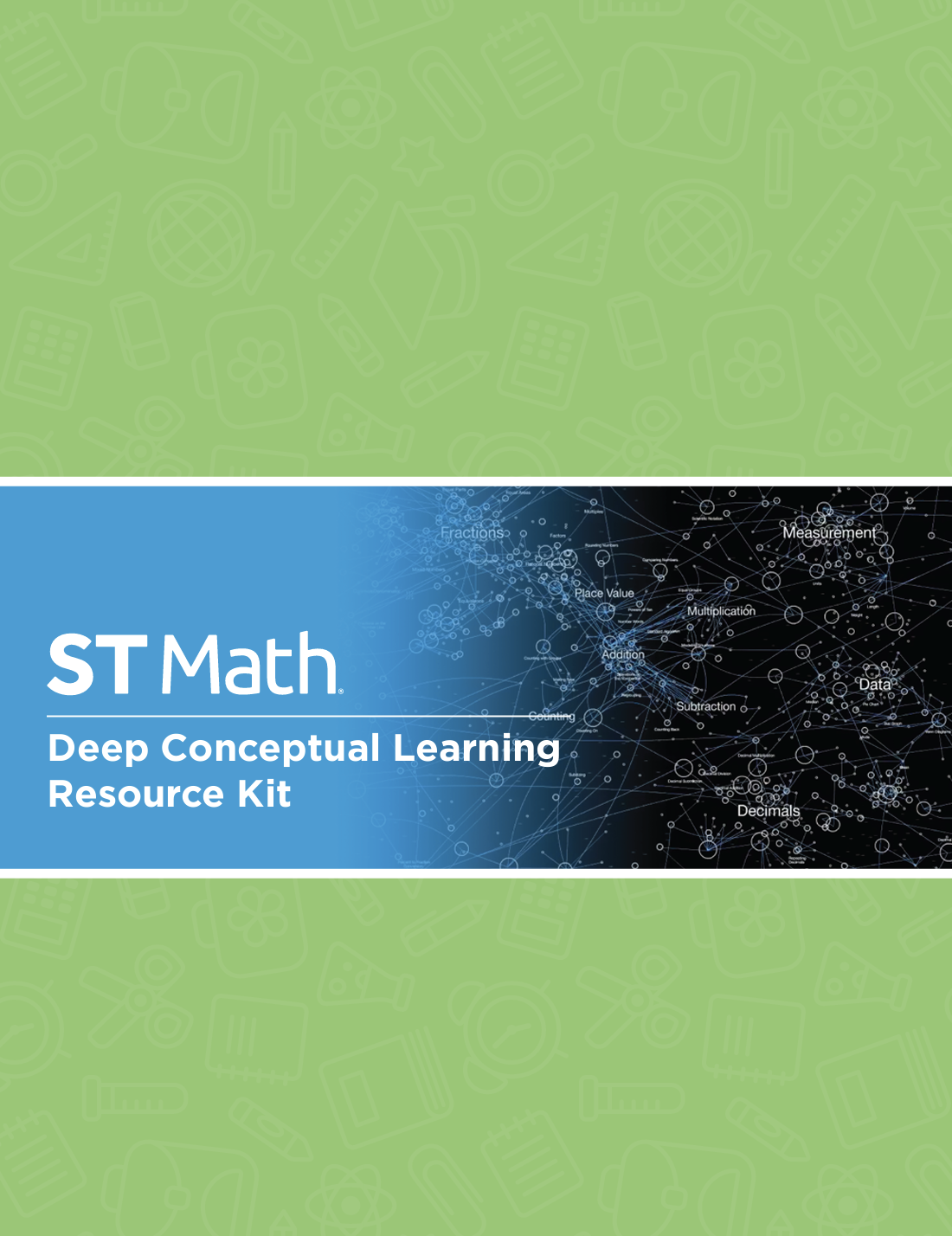Programs
Experience
Services
Educator Topics
Deep Conceptual Understanding
What is Conceptual Understanding?
Conceptual understanding in math is the creation of a robust framework representing the numerous and interwoven relationships between mathematical ideas, patterns, and procedures. This framework can be used to coherently integrate new knowledge and solve unfamiliar problems.
From a neuroscience perspective, conceptual learning requires building schemas. Schemas are all about connections, and building schemas of mathematical concepts gives students the ability to solve problems they haven’t seen before.
Building Conceptual Understanding
In this episode of the Inside Our MINDs podcast, Director of ST Math Content Ki Karou delves into how the brain learns, and what kinds of instruction can facilitate schema building for conceptual understanding.
You can listen to the episode in the player.
Building Conceptual Understanding
In this episode of the Inside Our MINDs podcast, Director of ST Math Content Ki Karou delves into how the brain learns, and what kinds of instruction can facilitate schema building for conceptual understanding.
You can listen to the episode in the player below.
The Neuroscience of Deeper Learning
Neuroscience offers great insight into how people build an understanding of the world around them, from infancy all the way through adulthood. When developing a deep understanding of mathematical concepts, there are four neural subsystems that work together:
- Perception-Action Schema Building: a continual cycle of perceiving or detecting something, taking an action and then observing the immediate effects of that action and adjusting the action.
- Experiential, Episodic Knowledge: knowledge that results from an experience that’s vividly memorable, both emotionally and physically.
- Problem Solving & Creative Ideation: applying facts and concepts in new and novel situations, and even across academic subject areas.
- Academic Discourse and Language Processing: putting ideas into words, and being able to explain justify the reasoning for those ideas.
What are Schemas?
A schema can be conceived as a scaffold, a blueprint, and a representation that describes an object, a string of events, or an idea, but also feelings, and essentially anything that can be experienced.
In math education, we are especially interested in establishing schemas to reduce cognitive load. For example, a schema for fractions can allow students to automatically manipulate numbers in fraction space, without investing precious brain power every time a fraction is encountered. Instead of spending brain power trying to remember how fractions work, students can focus on solving other problems for which a schema has not yet been established.
The Learning Path
Follow these steps to help students build conceptual mastery!
Another way of thinking about engaging the four neural subsystems for deeper learning is something we refer to as the learning path. Activities that allow for students to follow these three steps can help them develop conceptual mastery:
- Experience: hands-on, active learning that feeds the perception-action cycle
- Connect: relating previously mastered content to new ideas and problems
- Practice and Apply: practicing math in a variety of ways that require creative problem solving—learning to apply concepts to brand new situations is the key to true understanding
The Edtech Ingredients for Conceptual Learning
What are the most common ingredients in math edtech programs? What combination of ingredients should you be looking for? Well, that depends on what you're looking to accomplish. Whether you are looking for extra practice, direct instruction or conceptual learning, this downloadable rubric can help you evaluate the content of edtech programs to ensure you have a recipe for success.
Three I's to Mathematize
Follow these steps to create math experiences that will engage and motivate your students!
Use Math to Add INTRIGUE
-Ask "How can math add an interesting twist on the activity?"
-Put math at the core of the activity--math is not an add-on
INTERACT With Math in a New Way
-Go beyond paper and pencil
-Create an experience through which students dynamically interact with math
Use Math to INFORM Decisions
-Don't start and stop the math at the calculation
-Allow math to be a tool for the decisions you are naturally making in the experience
Remember: Learning should be active and rich with decision making. Use math to make decisions and solve new problems creatively!





